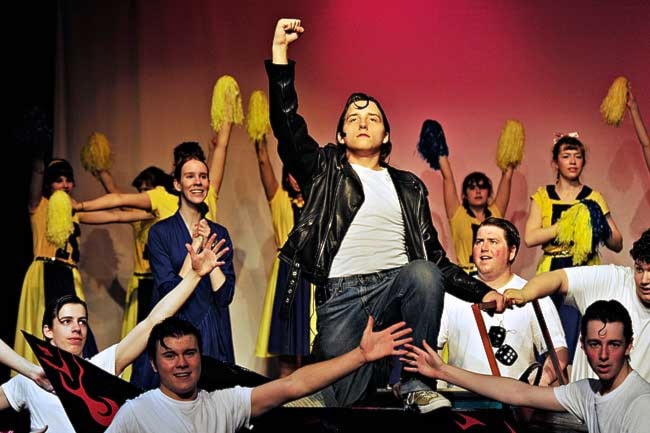A slim black hardcover caught John Boivin’s eye as he wove his way between mounds of dusty tomes inside McLeod’s Books in Vancouver, and his fate was sealed.
The book, purchased two years ago, would prove to be the impetus for the Whitehorse landscape painter’s latest exhibit, which opens in Arts Underground today.
The nearly-forgotten book contains poetry and pencil drawings inspired by Whitehorse, circa 1945. Titled Northwest, it’s the product of two American soldiers who met while working on construction of the Alaska Highway.
Boivin, 50, is usually no fan of poetry. But he found himself moved by some of the verses that described the local landscape, like “The Yukon tumbles from the pole / Her ancient hills crouch down in mist; / Her streams run sapphire as they roll / From dawn to evening’s amethyst. / High in the fathoms of her night / Voyage the limpid stars in flight.”
Boivin would later borrow turns of phrase from the author, Charles Norman, to name paintings of the exhibit.
He was even more interested by the reproduced black-and-white drawings by William Barnett of sights around the city. The location were easy for Boivin to identify.
One, a view of the Yukon River, was clearly drawn not far from where the S.S. Klondike now sits beached, although in 1945 there was no two-lane bridge to Riverdale—only a dirt path wending along the bank.
Another drawing portrays the military bunkhouses in Takhini North. A third shows Grey Mountain.
Boivin knew he would paint the same scenes himself. It proved tricky. He paced the banks of the Yukon River to find the right view of Grey Mountain, but it didn’t look right.
What appeared to be twigs were in fact trees. Without buildings or people in the scene, the scale was easy to confuse.
Boivin climbed the clay cliffs, followed a path and found just the right spot. He’s sure it must have been where Norman stood, 65 years ago.
“This is actually Sixth Avenue,” Boivin says, pointing to an expanse in the original drawing, “covered with snow.”
The show’s name is also an homage to the book. It’s called Northwest Revisited.
This is Boivin’s fifth exhibit of paintings. He’s worked in the medium, in drips and drabs, since he was a teenager, but he only began to take the pursuit seriously in the past five years.
He usually has several paintings on the go. Any particular work may take several days, or several years. When one work isn’t coming together, Boivin sets it aside to let it “bake” in his head until the time is right.
He struggled for months with one painting of willows arching over the Yukon River with Grey Mountain in the background. Something was missing, but he didn’t know what.
Then one day he added a daub of orange paint to highlight the rocky hillside and everything clicked.
“All the sudden, the rock makes sense. And not only that, it makes that place make sense,” he said, pointing to the blue river. “And that place.” He gestures toward the hills.
Boivin once painted with watercolour, but he found he would agonize over the placement of every line. If a mistake is made in watercolour, it’s difficult to correct.
That’s why he came to prefer acrylic, because “the acrylic undo function is called adding another blob of paint.”
As Boivin’s painting style matures he finds himself leaving more out of his paintings. He’s learning that viewers fill in the blanks themselves.
For example, in a painting of Fish Lake as seen from Mount McIntyre, titled “Her ancient hills crouch down in mist,” the pine trees in the foreground are missing trunks: simple daubs of dark-green paint float in the blue sky, with no vertical line holding them together.
Painting pines is a pain, Boivin explains with a shrug. And he continues to aim to use “just the strokes you really need.”
“It expresses a truth about the tree,” he said. “I think I’ll be doing it more the in future.”
Boivin also used to work on his compositions from photographs, but he came to learn the disappointed expression on viewers’ faces when they learned this. He also found that photographs didn’t necessarily capture the details he wanted.
So now he sketches on site, and will sometimes pack with him a canvas and paints.
To round the show out, Boivin has scavenged the internet for extra copies of the book. He found seven, which are on sale for $30 each. The cost includes a package of postcards of Boivin’s work.
“Here’s a really cool thing that happened back in the 1940s, and it deserves to be remembered today,” said Boivin.
The show continues until June 23.
Contact John Thompson at
johnt@yukon-news.com.
